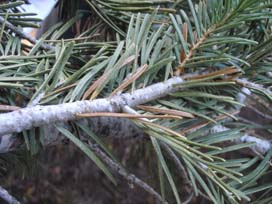
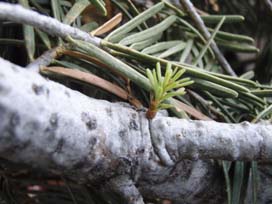
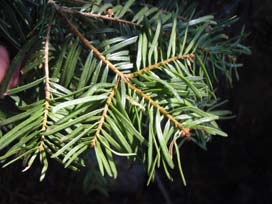
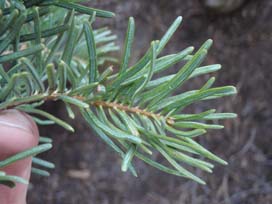
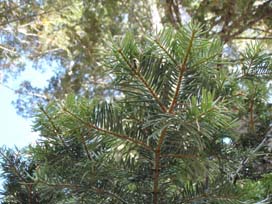
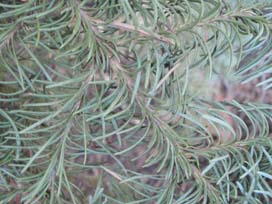
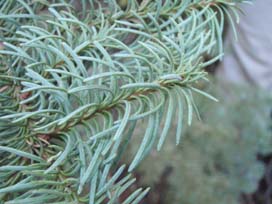
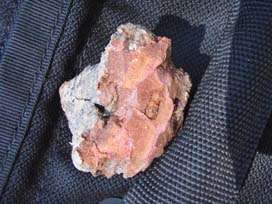
red fir
Abies magnifica var. magnifica
Family: Pinaceae.
Type: Large evergreen conifer.
Leaves: Round-tipped needles which leave a circular scar on the stem when plucked (contrast to Douglas-fir, for example). The needle aroma is not strongly tangerine, in contrast to the white fir, but that is variable. The needles do not make the quarter-turn twist that the needles of the white fir make. A key characteristic of the red fir's needles is that they curve in a "hockey stick" shape as they leave the stem, following the stem initially and then curving outward from it; this curvature can be pronounced or subtle, but the white fir does not have this curvature.
Twig: The bark of young red firs is very similar to that of white firs: smooth and gray, with sap-filled blisters. Mature red firs are a dark reddish brown, similar to the Douglas-fir. However, whereas the white fir and the Douglas-fir have a "roast beef and cheese" appearance when broken, the red fir's bark is uniformly red when broken.
Cone: Like the white fir, the red fir's cones are usually seen only in the canopy, upright; the cones shatter and fall as individual scales. The red fir's cones are larger than the white fir's.
Miscellaneous: The red fir is the high-altitude analogue of the white fir, and its ecology is very similar. It is very shade-tolerant and can be found up into high elevations and in colder areas. It is not fire-tolerant.
 |
 |
 |
 |
 |
 |
 |
 |